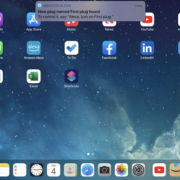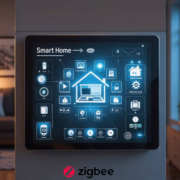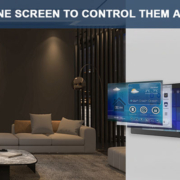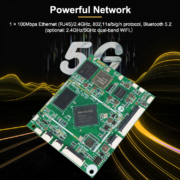Easy-to-Use Smart Home Control Panel for Seniors: Enhancing Comfort, Convenience, and Safety
As technology continues to evolve, the adoption of smart home devices is becoming more widespread, improving the way we live. For seniors, however, technology can sometimes feel overwhelming. Many seniors want the benefits of a connected, smart home but need solutions that are simple, intuitive, and accessible. An easy-to-use smart home control panel can make a world of difference, providing a seamless way to control lights, thermostats, security systems, and more—all with minimal complexity.
What Makes a Smart Home Control Panel Senior-Friendly?
The best smart home control panels for seniors combine intuitive design, large, clear displays, and simple, easy-to-navigate interfaces. Below are some of the features that make a control panel senior-friendly:
1. Simple, Intuitive Interface
A user-friendly interface is the most important feature of any smart home control panel for seniors. Complex menus and overwhelming options can cause frustration. The ideal control panel should have:
- Large, clearly labeled buttons: Large text and icons make it easier for seniors with visual impairments to read and understand the controls.
- Touchscreen interface: Touchscreens provide a more natural and easy way to interact with the control panel, as opposed to physical buttons that can be harder to press or confuse.
- Simple navigation: Fewer screens, menus, and steps between actions make the system less intimidating for seniors who might not be tech-savvy.
2. Voice Control Integration
For seniors with limited mobility or dexterity, voice control can be an invaluable feature. By integrating voice assistants like Amazon Alexa, Google Assistant, or Apple Siri, a senior can control various smart devices using simple voice commands. Voice control allows them to adjust the thermostat, turn on the lights, lock doors, or play music without needing to touch a button.
Example commands include:
- “Alexa, set the thermostat to 72°F.”
- “Hey Siri, turn on the kitchen lights.”
- “OK Google, lock the front door.”
This hands-free approach reduces the need for physical interaction, which is especially useful for seniors who may have arthritis or other mobility limitations.
3. Large, High-Contrast Display
Seniors often have decreased vision, so a large, high-contrast touchscreen is essential for easy readability. Many control panels offer customizable settings for font size, contrast, and color schemes, allowing users to adjust the display according to their preferences.
Some key display features include:
- High contrast text and background to make reading easier.
- Large icons and buttons that are easy to tap or press.
- Adjustable brightness to accommodate different lighting conditions.
4. Customizable, Pre-Programmed Settings
Seniors may find it helpful to have pre-programmed settings or automation routines that can be activated with a single touch or voice command. For instance, a senior might set up a “Good Morning” routine that automatically opens the curtains, turns on the lights, and adjusts the temperature when they wake up.
Other customizable features might include:
- Scheduled routines for things like lights, locks, and heating.
- Scene presets for specific activities such as watching TV, cooking, or going to bed.
- Emergency settings like automatically turning on all lights in the house or triggering an alarm if needed.
These features reduce the cognitive load and ensure that seniors don’t have to remember how to operate each device individually.
5. Emergency Features and Alerts
The safety and well-being of seniors is a top priority. A smart home control panel designed for seniors should have integrated emergency features, such as:
- Panic buttons or emergency contact alerts that can send notifications to family members or caregivers in case of an emergency.
- Fall detection integration with devices like smart sensors or wearables that can notify loved ones if a fall is detected.
- Emergency lighting that automatically turns on if there is a power outage, ensuring the senior can safely move around the house.
Having these features easily accessible from the smart home control panel ensures that seniors can quickly get help if needed, without having to fumble with a smartphone or other complex devices.










